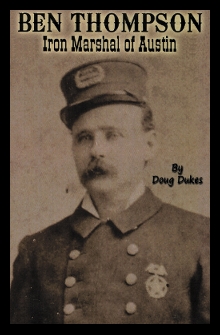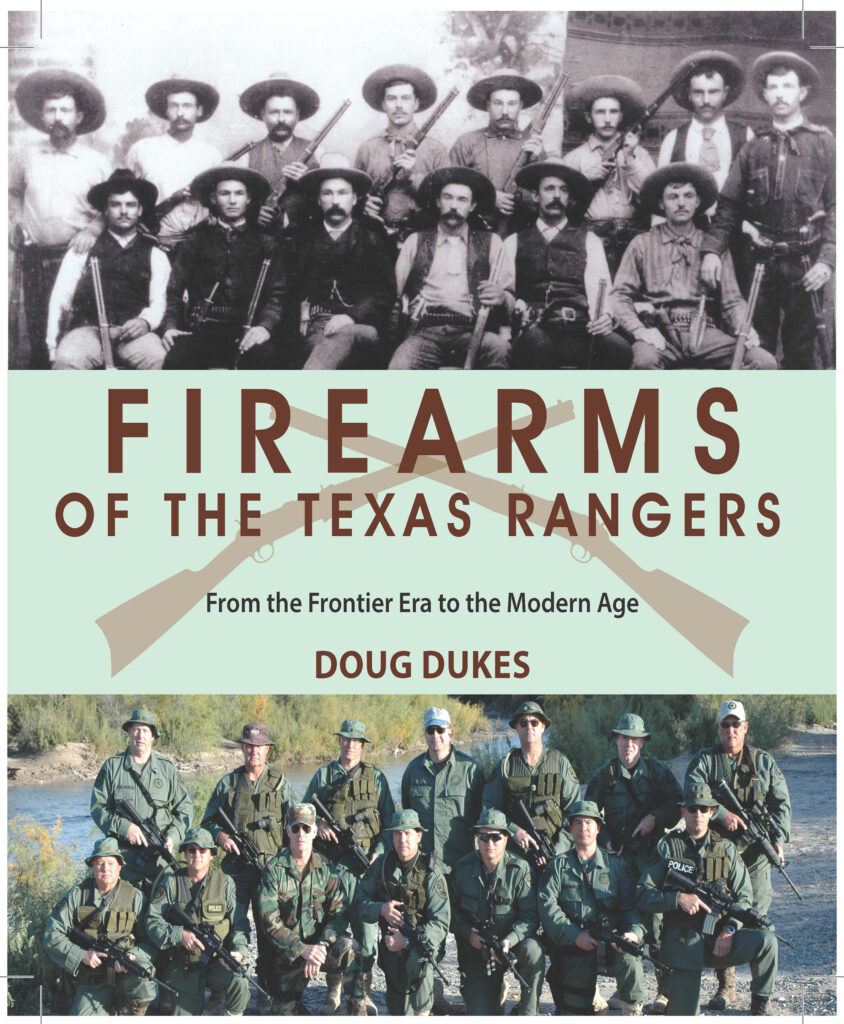
Ben Thompson: Iron Marshal of Austin
Ben Thompson is considered by many to be a member of a very small number of truly dangerous men in Texas. Yet, he stands apart from “Bloody” Bill Longley, John Wesley Hardin, and the other members of this group due to his compassion and his loyalty to his friends and family. Also, unlike others, he spent part of his life representing law enforcement.
No one doubts that, as the saying goes, “he had no back-up in him.” But at the same time it is not fair for us to compare the values and actions of a man who lives in the 19th century by the same rules, laws, and values that we use today in the 21st century. Only by looking at things through Ben’s eyes using his life experiences and surroundings can we truly try to understand him.
Law enforcement was a fledgling enterprise in the 1880s and most law enforcement officers had to invent techniques as they went along. City marshals were the standard in Texas, but a modern police force was not. Ben Thompson was City Marshal/Chief of Police for a short 19 months but his life and the events he was involved in before, during and after those 19 months affected both Ben and the city of Austin to this very day.
Praise for Ben Thompson: Iron Marshal of Austin
Dukes concentrates on the history and context of Thompson’s service as city marshal of Austin, Texas from 1880 to his death in the Vaudeville Theater in March 1884. This short work should give those interested in the English born gunfighter new points of interest. The author uses primary source material from Thompson and others to cover many topics, from the town’s early vigilance committees to its gun control laws, from the history of its gambling and saloons to houses of prostitution. Deeper insight is gained through Thompson’s own words while a candidate for office in Austin and by contemporary observers, who reveal they thought him a fine police officer.
Mark Dworkin, Editor, Reading the West, Journal of the Wild West History Association
Ben Thompson held within a Jekyll-Hyde personality, yet remains an iconic figure of the Wild West. He gained a deserved reputation as a tough fighting man in the period of Reconstruction, and became one of the top gunfighters. Yet he also earned a reputation as a fair and just man, beloved by family and countless friends. He chose to fight for law and order in Texas and was elected by the people of Austin to be their top law enforcement officer. The violent nature of his personality also brought about his defeat, and ultimately his death.Doug Dukes has provided an honest appraisal of the Iron Marshal of Austin — Ben Thompson.
Chuck Parsons, Author of The Sutton-Taylor Feud: The Deadliest Blood Feud in Texas

Firearms of the Texas Rangers: From the Frontier Era to the Modern Age
From their founding in the 1820s up to the modern age, the Texas Rangers have shown the ability to adapt and survive. Part of that survival depended on their use of firearms. The evolving technology of these weapons often determined the effectiveness of these early day Rangers. John Coffee “Jack” Hays and Samuel Walker would leave their mark on the Rangers by incorporating new technology which allowed them to alter tactics when confronting their adversaries. The Frontier Battalion was created at
about the same time as the Colt Peacemaker and the Winchester 73—these were the guns that “won the West.”
Firearms of the Texas Rangers, with more than 180 photographs, tells the history of the Texas Rangers primarily through the use of their firearms. Author Doug Dukes narrates famous episodes in Ranger history, including Jack Hays and the Paterson, the Walker Colt, the McCulloch Colt Revolver
(smuggled through the Union blockade during the Civil War), and the Frontier Battalion and their use of the Colt Peacemaker and Winchester and Sharps carbines. Readers will delight in learning of Frank Hamer’s marksmanship with his Colt Single Action Army and his Remington, along with Captain J.W. McCormick and his two ivory-handled .45 caliber Colt pistols, complete with photos. Whether it was a Ranger in 1844 with his Paterson on patrol for Indians north of San Antonio, or a Ranger in 2016 with his LaRue 7.62 rifle working the Rio Grande looking for smugglers and terrorists, the technology may have changed, but the gritty job of the Rangers has not.
“This book is unique in the author’s approach to the tactics of the Rangers, and his detailed reporting on the types and amounts of firearms used, their ammunition and how much of it was issued and where it was obtained. He also describes the personal preferences of individual Rangers, with good detailed information not found in other works. I enjoyed the interesting accounts of the various fights and campaigns of the Texas Rangers.”—Phil Spangenberger, Firearms Editor, True West magazine
“Drawing on his decades of law enforcement and firearms experience, Dukes has provided something unique to the body of Texas Ranger literature. Many authors incorporate discussions on weaponry
while telling the larger story of that vaunted corps of Indian fighters and lawmen. However, few, if any, have put the guns in the forefront and so completely demonstrated their importance to the Rangers’ legend.”—Darren L. Ivey, author of The Ranger Ideal Volume 1, 2 and Volume 3.